
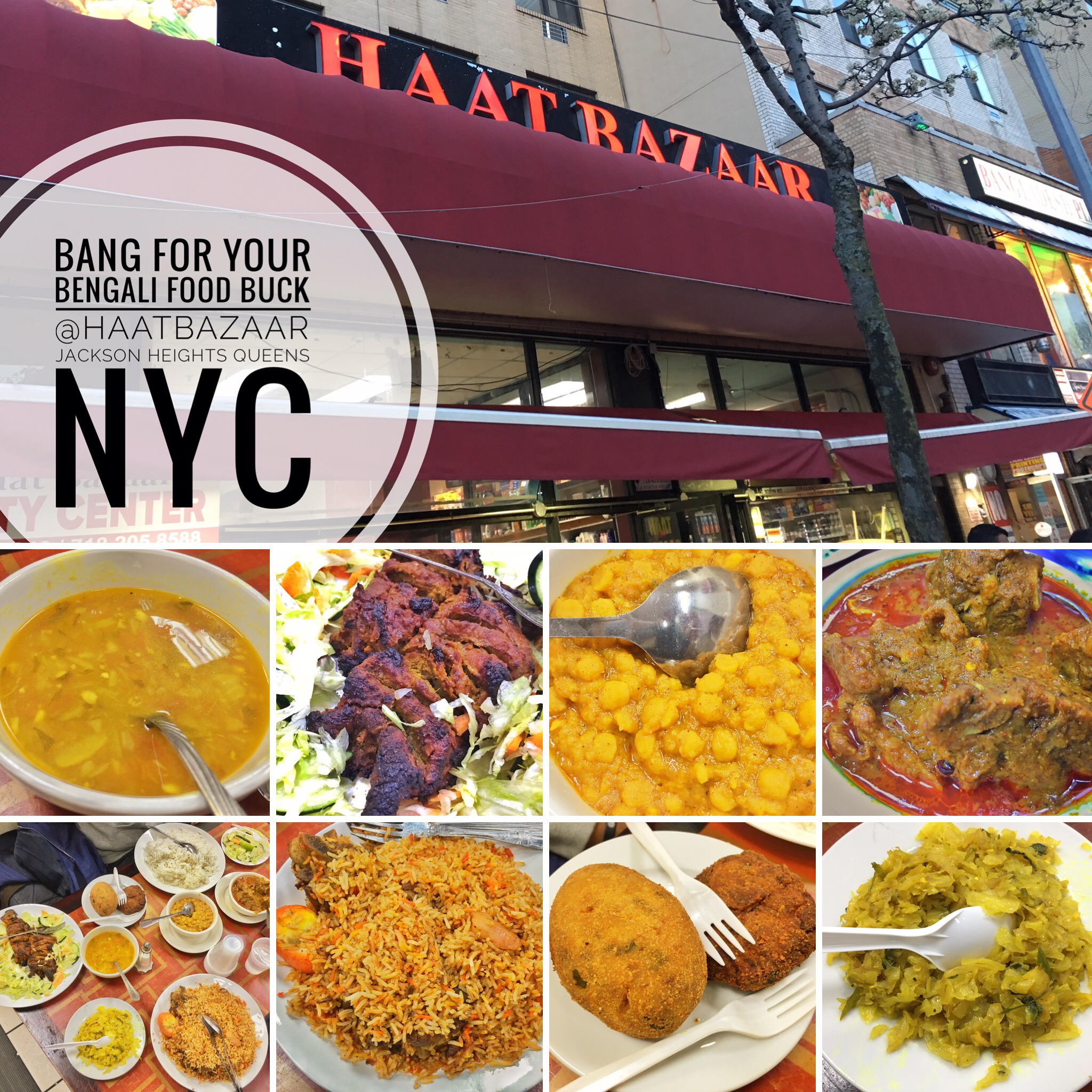
The Vitals:
the spot: Haat Bazaar 3711 73rd st suite 73 Jackson Heights Queens NY
the eats: Biriyani, beef curry, dal, dimmer chop(fried egg), bhaji – basically get everything you can but fair warning: the fish has a million bones!!
the bucks: $10 a person
the full nelson: legendary Bengali grocer serving authentic home cooked Bengali food in the heart of Jackson Heights Queens
Beyond Chicken Tikka Masala and Naan lies a complex world of regional Indian cuisines, like Bengali cuisine of which I grew up on. Not unlike some 1st generation American kids, I longed for hamburgers and pizza over funky fish curries and lentil stews but as I grew older and Mom’s kitchen grew further and further away, I reminisce for the OG stuff I grew up on.
Fair warning: Bengali food is not for everybody. The curries come off oily for the uninitiated, the fish is loaded with bones and can be dangerous to eat if you’re not careful, and yeah, the kabobs are cooked to a temperature beyond well done. Still the spice profile is distinctly different from the all you can eat Indian buffets where cumin and coriander are made almost irrelevant by copious amounts of heavy cream. The bottom line is that there is a lot more to Indian food than your neighborhood Indian restaurant, and if you are looking for a true foodie adventure, head to Haat Bazaar in Jackson Heights, Queens.
The following is a recommended dish guide for a first timer doing up Bengali cuisine:

Much like a Yemeni joint I hit up in Brooklyn for whole roasted lamb, Haat Bazaar serves up a complimentary soup. Since I didn’t order it I don’t have many details but I can tell you some of the tell tale signs of Bengali food are present. The yellow hue is certainly due to the use of turmeric and mustard oil, of which both are prevalent in Bengali cooking. The soup is made of a mix of split yellow peas(dal) and cabbage, also staples of Bangladeshi cooking. I recently came across a radio broadcast of Chef Evan Kleinman’s Good Food where her guest, Chitrita Banerji, a Bengali food expert explained that there is an order to eating the dishes of Bengali cuisine. You start with rice, then vegetables before moving on to heavier dishes like fish and finally meat. In a sense this freebie soup was a subtle lesson in how to properly proceed with a Bengali feast.
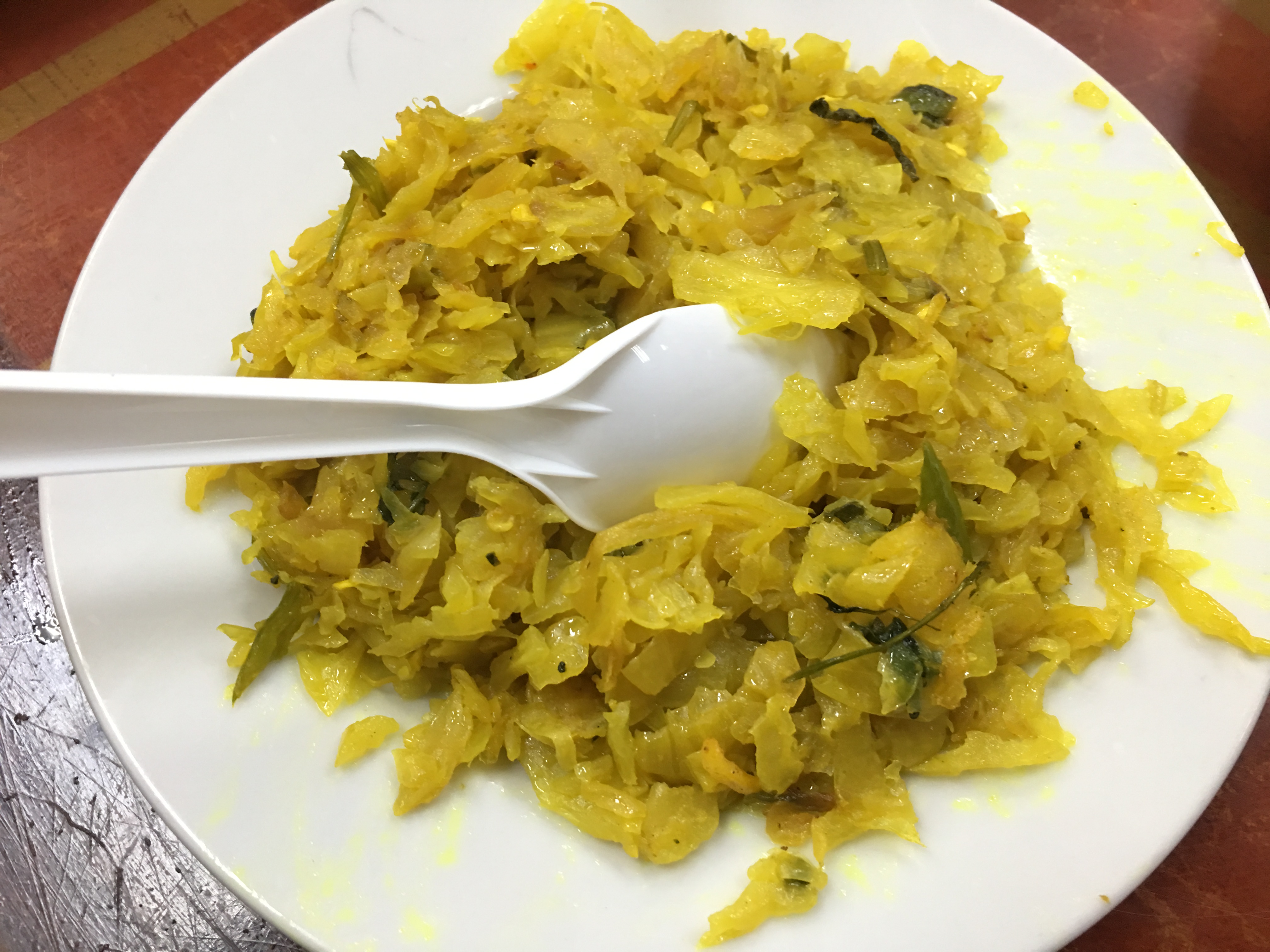
A “bhaji” is a dish of fried vegetables cooked in an array of Bengali spices like cumin, turmeric and cardamom. Some bhaji take on more unusual vegetables like bitter mellon, which as the name implies has a natural bitter taste which only gets compounded with the bitter undertones of cumin and turmeric. Bitter Mellon is a dish best saved for the more experienced palate. At Haat Bazaar, go for the Cabbage version seen above where the naturally mild and slightly sweet flesh keeps the spices at bay. Cabbage bhaji is a fine introduction for a first timer at a Bengali restaurant.
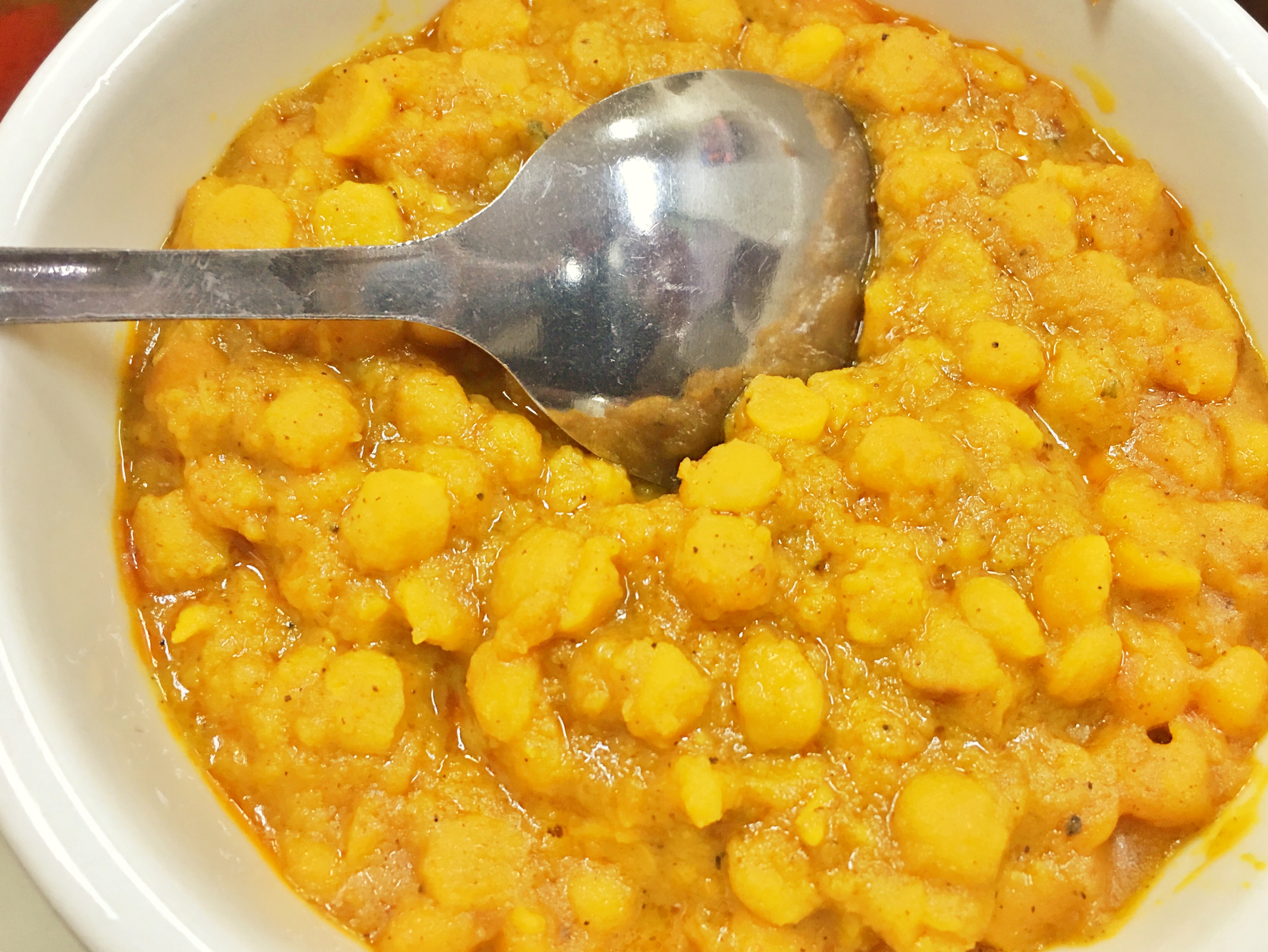
If there is one dish that resonates with my Bengali DNA, it has to be dal. Dal is a curry that can be made with lentils or split peas, I tend use lentils at home but yellow split pea dal is a Bengali classic, that’s how mom did it. In fact that was the one Bengali food I loved since day one. Like salsa, the variations on dal are endless and the Bengali version is not to be missed. The split peas become buttery and tender in a long simmer and compliment perfectly with the pungency of turmeric which is what gives this dal its intense yellow color. A must order and sure to be crowd favorite, even among novice eaters of Indian cuisine.
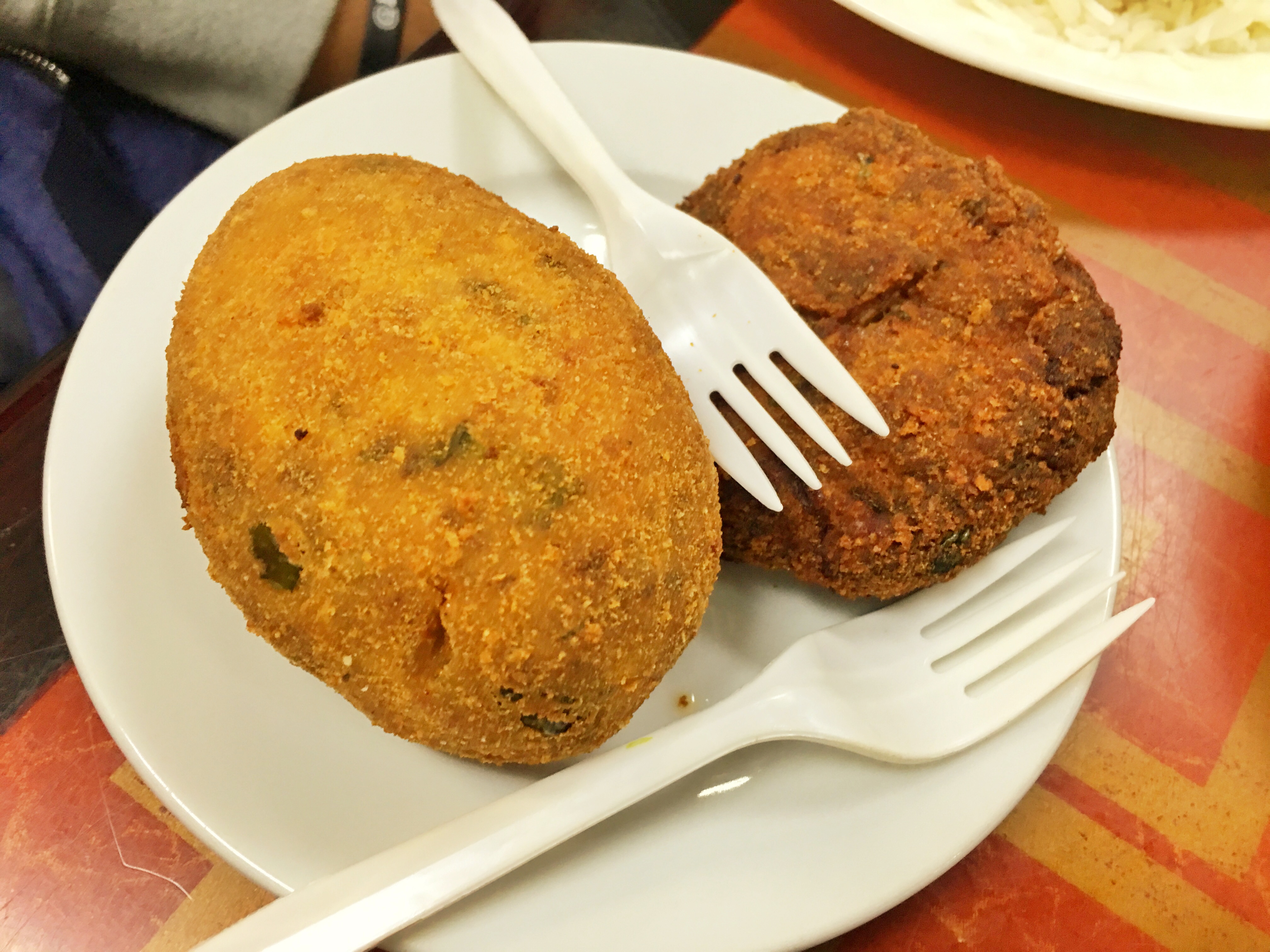
Many of my experiences eating Bangladeshi food outside of someone’s home have been at grocery stores with steam trays of various dishes. Haat Bazaar had the largest selection I have yet come across and this fried egg may have been the score of the meal. Called “Dimmer Chop“, what you see above is a hard boiled egg that is coated in mashed potatoes and then fried. Kind of like a Scotch Egg minus the sausage, you can imagine this is a very popular street food in Bengali cities. This is when the meal takes a heavy turn. Bengali’s love their fried foods and meats. And speaking of meats . . .
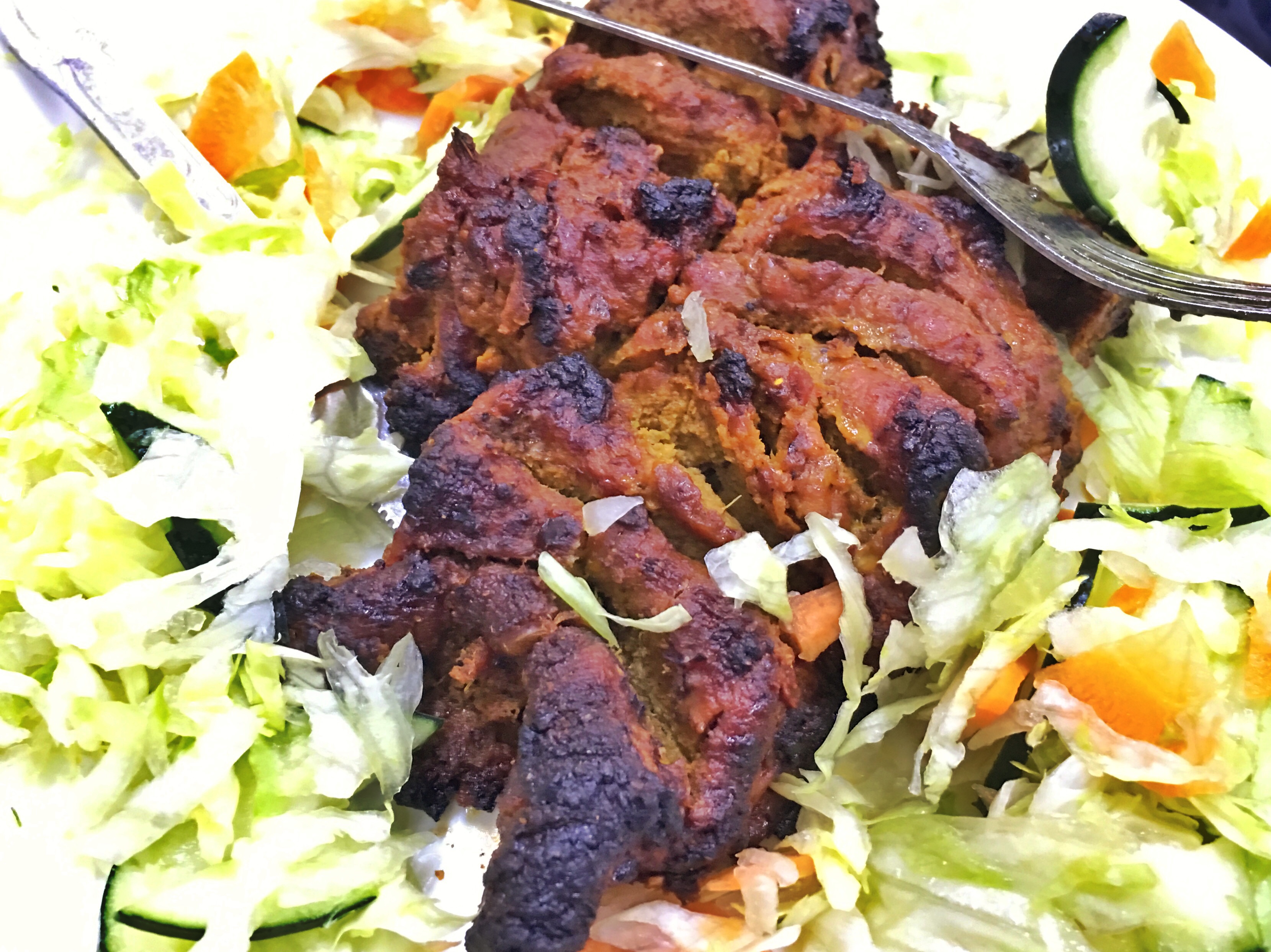
I think every culture loves some good meat on a stick and Bengali’s are no different with their love for kabobs. Here beef is marinated in yogurt and spices which thoroughly favors the latter. The key to making great Indian Kabob is to make sure the ratio of yogurt to spice doesn’t go too heavy on the yogurt – you want to taste the spice paste, not get hints of it. If you eat meat, the kabob is a no brainer but if there is one major element in Bengali cooking that I deviate from is their preference to cook meat through. Expect the meat to be dry but the char to be extremely flavorful. One of these days I’m gonna have to start my own kabob truck and get this right. Until then I’ll just have to make do with an occasional well done kabob at Haat Bazaar.
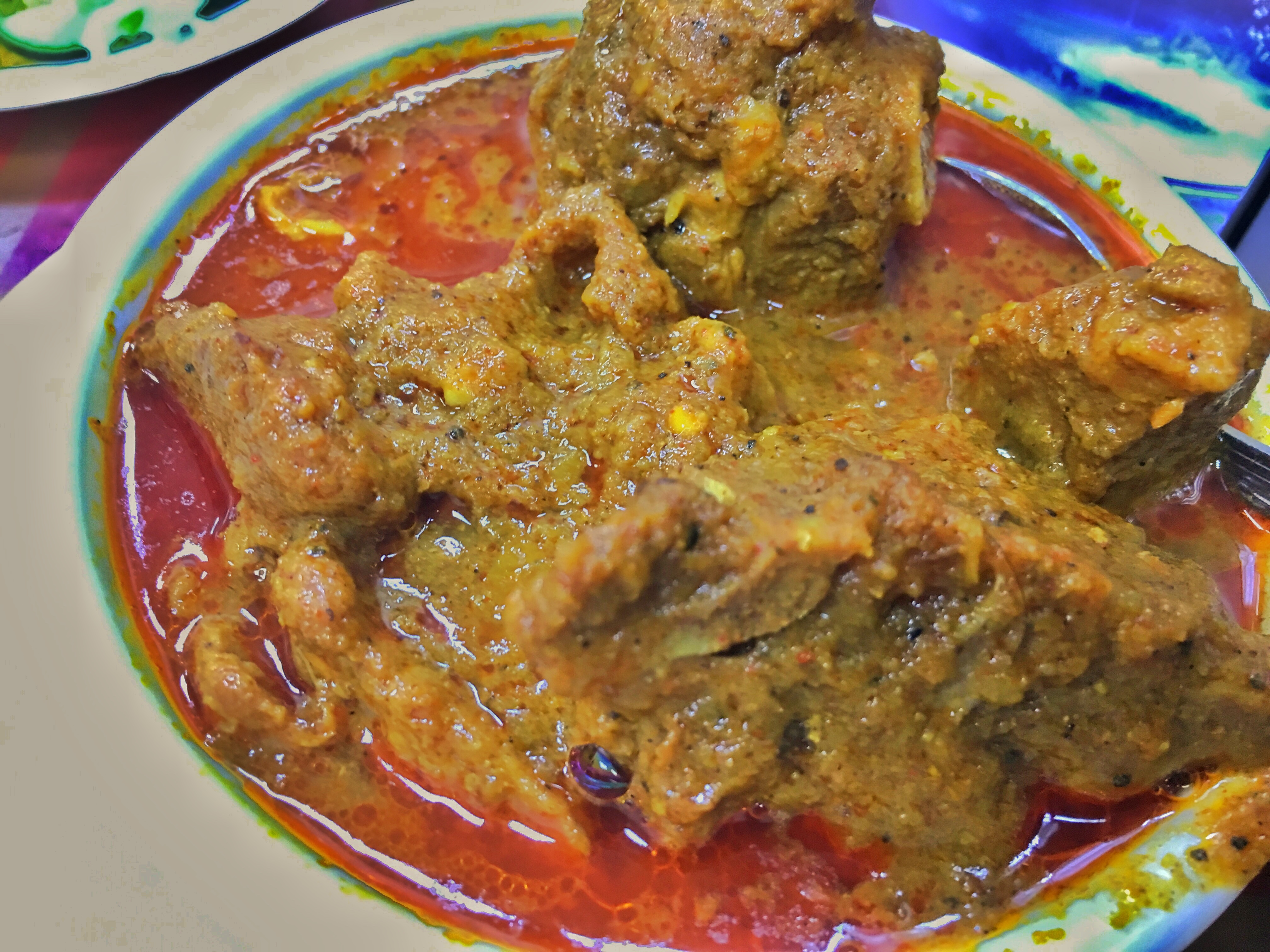
This is when you know you are eating at a Bengali restaurant: a rich, oily beef curry. While boneless meat can be made tender in a long cooking process, beef with bones makes for a richer curry sauce. The fat and marrow from the bones gradually release in the simmer to enrich the curry sauce and the mixing of the curry’s sauce(Bengali’s call it “jhol”) with rice is as satisfying as eating the meat itself. You have worked your way up to eating a curry this hardcore but have faith you can hang with this pro curry. Afterwards you will embrace a bone studded oily curry because much like why chicken thighs makes the best fried chicken, an oily red meat curry is a superior curry.
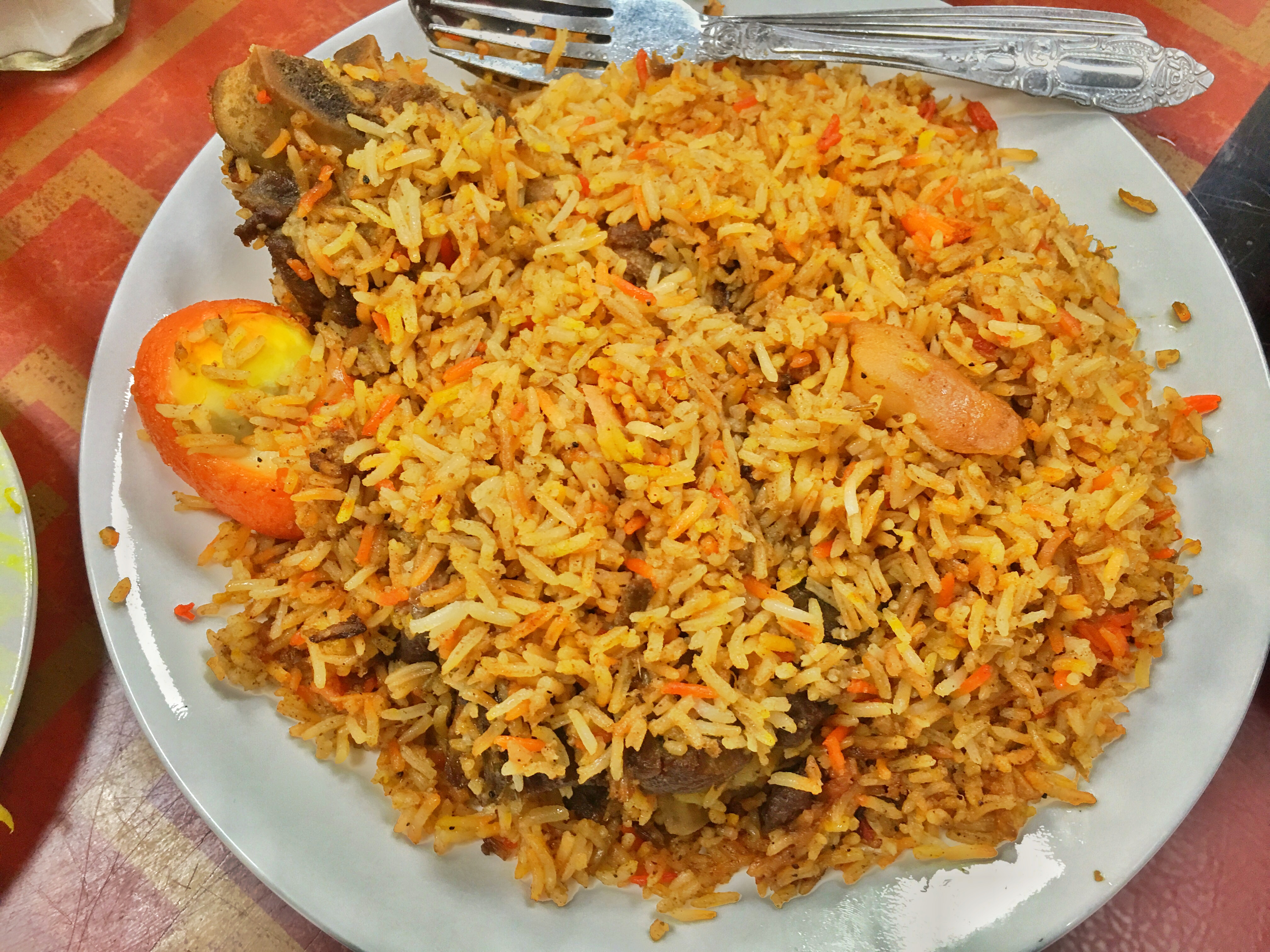
After Dal, Biriyani is my favorite dish of the Indian Sub Continent. The fragrant rice dish slowly cooks with a myriad of spices, often with meats, sometimes yogurt and almost always with a little saffron. I find the Bengali versions to be a bit sweeter but one thing I do know for certain is that Haat Bazaar’s biriyani is damn cheap. Biriyani is a special dish, often served at weddings, and I think it deserves a decent price tag. Still you got a love a joint that serves a special occasion dish on a plastic plate that still satisfies the craving.
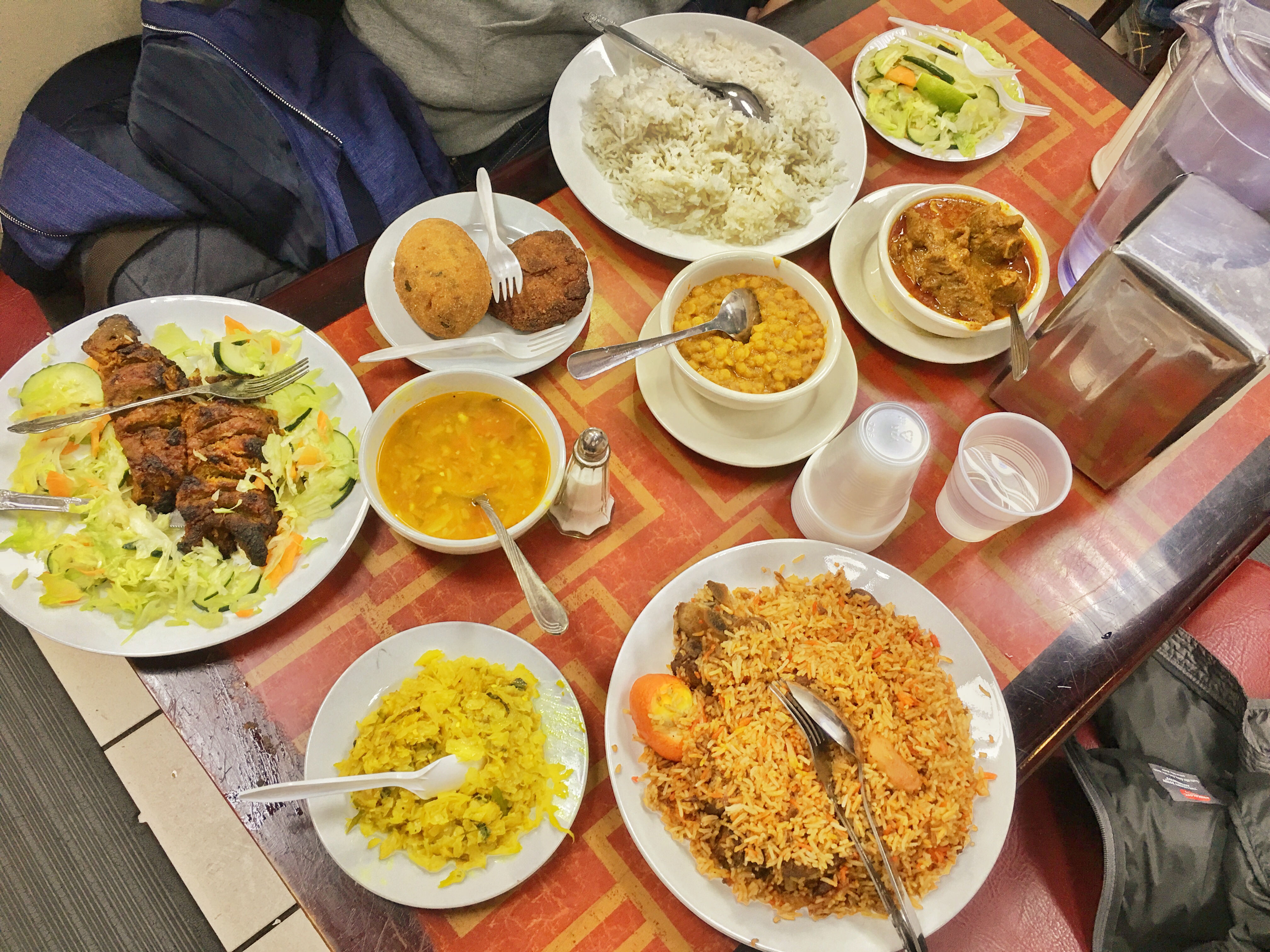
In case you were wondering, I over ordered. I had a guest with me and I’m sure the price tag ran up to around $15 a person but you can easily come to Haat Bazaar and factor in about $10 a head. The problem you will have is choosing, which is how my tab soared. Take this visual guide of a Bengali feast in phases and no doubt your trip to Haat Bazaar will be some bonafide Bang for your Bengali Buck!
Until next time Cheap Eaters, stay thrifty and eat adventurously!
Leave a Reply